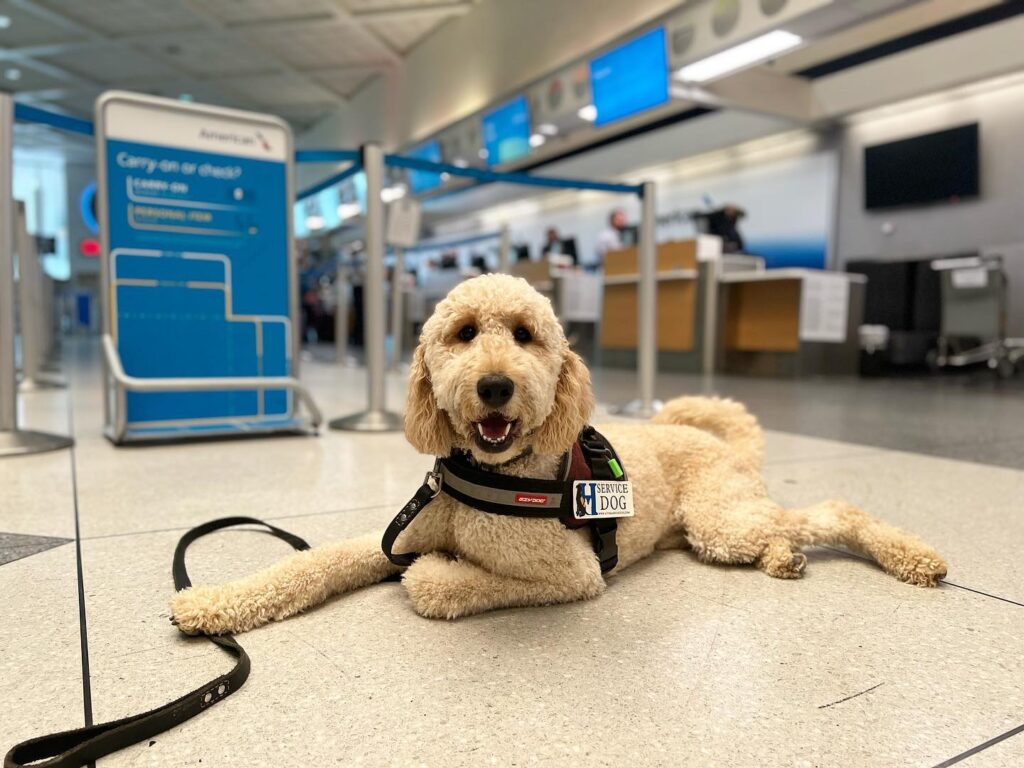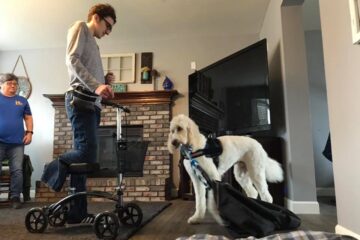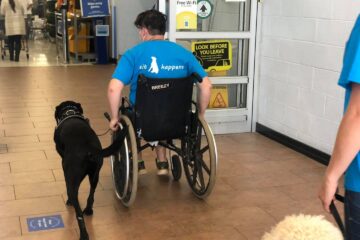The work of a service dog is truly awe-inspiring. These amazing dogs assist some of the most vulnerable in society by performing a range of tasks to help their handlers in their everyday lives. Whether they are an autism service dog, a mobility assistance dog, a hearing service dog, or another type of assistance animal, these dogs play a pivotal role through their trained tasks.
We know that training a service dog is a time-intensive process. In a previous blog post, we have discussed how long it takes to train a service dog. Our process, from start-to-finish, typically takes 12 to 18 months. A significant proportion of that time is usually focused when the service dog candidate is a puppy, building the foundations that will turn them into a reliable and effective service dog.
In this article, we’ll look at the steps that are required to train a puppy to be a service dog.
Puppy selection
One of the most important steps on this journey is the first one – the selection of the service dog puppy.
Although technically, any dog can be a service dog, there are some dogs who are predisposed to be better candidates for this type of work than others. There are several factors to consider when selecting a puppy for service dog work, including:
- Health and genetics. Understanding the heritage and history of the puppy lines can help to highlight any potential health issues. This can also give an indication to the temperament of the dog.
- Suitability for the job. For this, think less about breed, and more about practicalities – for example, is a toy breed going to be well-suited as a mobility service dog? The dog should be a suitable fit for its eventual work.
- Trainability and eagerness to learn. This factor is somewhat guided by professional judgment, and takes into account the characteristics and aptitude of the dog to work. Initial puppy testing can help to evaluate the trainability of the puppy and its willingness to work.
- Environmental stability. It is vital for a service dog to be able to perform their given duties in a wide variety of scenarios. With this in mind, puppies will usually be tested to ensure they are confident, and aren’t scared or reactive towards new people, objects or sounds.
Puppy selection is a critical phase. Service dog training can be complex, particularly when it comes to teaching difficult tasks. The training process will be far more difficult if the dog simply isn’t showing a desire to learn. Don’t overlook the importance of choosing the right service dog puppy at the outset.

Building up a solid foundation of obedience and socialization
There are behavioral traits that every service dog must display. Remember, because of the nature of their work, service dogs are able to access public places that pet dogs, therapy dogs and emotional support animals (ESAs) cannot. It is essential that the service dog behaves in an appropriate manner at all times.
As we outlined above, thoughtful puppy selection can make life easier when it comes to training a service dog. From there, trainers must build a solid foundation of behavior that will enable he handler to have total control of their service dog. This includes teaching a full suite of obedience commands, and just as importantly, generalizing this in different situations. It is one thing for a dog to behave well around the home; it is quite another to do it when there are abundant distractions in a busy public place.
Socialization is also a key building block of this behavioral foundation. Exposing the puppy to new environments, new people and new dogs reduces the risk of unexpected or reactive behavior further down the line.
At Highland Canine Service Dogs, we place a huge emphasis on this phase of the training process. In addition to the daily work required at our training center to build these good patterns of behavior, service dog candidates are also taken on frequent socialization outings in the community. Our Puppy Raising Program – where prospective service dogs live with their puppy raiser for a couple of months – also teaches the puppy how to live in a home and prepares them for life as a service dog.

Task training
With strong foundations in place, the final part of the service dog training process is the task training that will make such a huge difference to the life of the service dog’s handler.
The nature of the tasks that will be trained depends on the type of service dog, and how they can best assist their handler. Some tasks will require more intensive training, based on the difficulty of the task and the speed with which the dog is able to pick it up. The trainer will work with the service dog candidate until they are at a point where they can perform their assigned tasks reliably and efficiently. This can take a number of months – the repetition is necessary to ensure that the service dog can carry out their work as necessary. At this stage, the candidate is moving out of puppyhood towards adolescence, and eventually, adulthood.
Task training is, of course, the main ‘output’ of the service dog training process. It is arguably the part of the training plan that is the most complex, and it is what delivers the true value to the service dog handler. However, there is little doubt that task training – and the process as a whole – benefits a great deal from the foundational work that sets it up. Correctly selecting a puppy, building a solid foundation of obedience and control, and generalizing these behaviors in different environments are all key factors in creating a service dog who can truly be relied upon.
If you are considering a service dog for your family, speak with us today! Our team of professional service dog trainers is happy to discuss questions you may have on our training process, or how a service dog can benefit you. Call us on (704) 500-8281 or email us at info@autismassistancedog.com for more information.



0 Comments